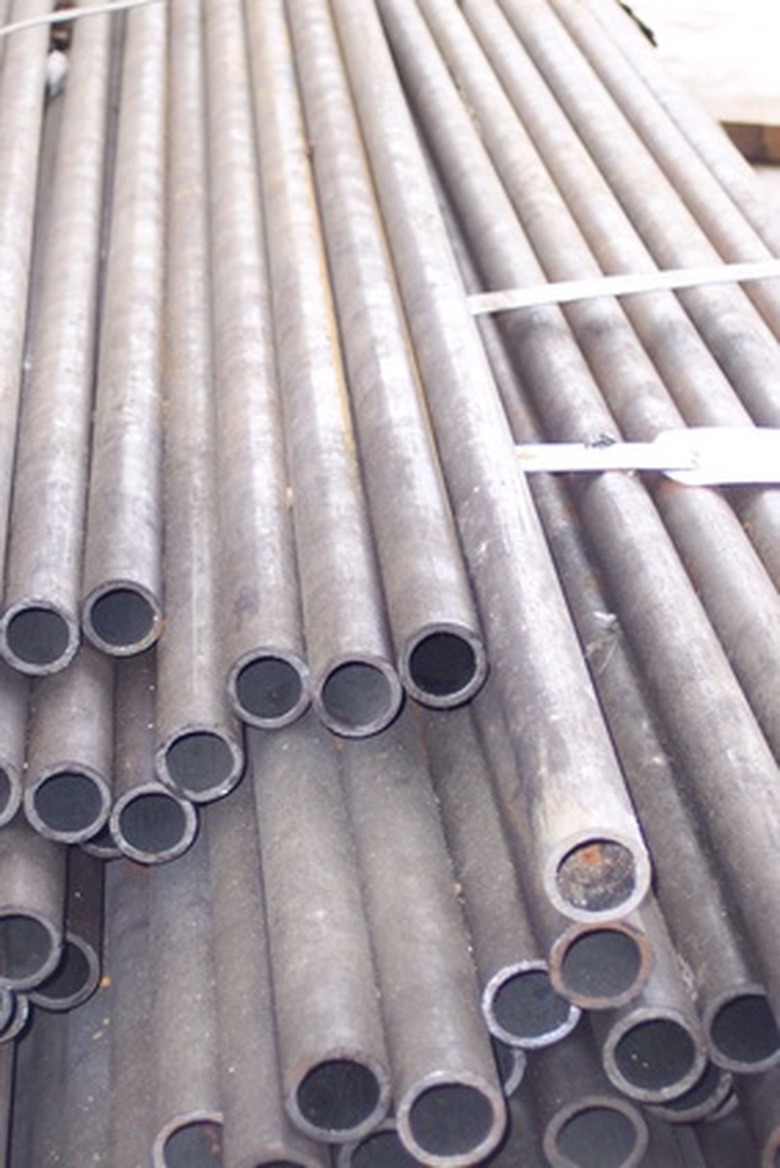How To Calculate Dynamic Pressure
Pressure, in physics, is force divided by unit area. Force, in turn, is mass times acceleration. This explains why a winter adventurer is safer on ice of questionable thickness if he lies down on the surface rather than standing upright; the force he exerts on the ice (his mass times the downward accelerating owing to gravity) is the same in both cases, but if he is lying flat rather than standing on two feet, this force is distributed over a greater area, thereby lowering the pressure placed on the ice.
The above example deals with static pressure – that is, nothing in this "problem" is moving (and hopefully it stays that way!). Dynamic pressure is different, involving the motion of objects through fluids – that is, liquids or gases – or the flow of fluids themselves.
The General Pressure Equation
The General Pressure Equation
As noted, pressure is force divided by area, and force is mass times acceleration. Mass (m), however, can also be written as the product of density (ρ) and volume (V), since density is just mass divided by volume. That is, since:
\(\rho=\frac{m}{V}\text{ then } = m=\rho V\)
Also, for regular geometric figures, volume divided by area simply yields height.
This means that that for, say, a column of fluid standing in a cylinder, pressure (P) can be expressed in the following standard units:
\(P = {mg \above{1pt}A} = {ρVg \above{1pt}A}= ρg{V \above{1pt}A} = ρgh\)
Here, h is the depth below the surface of the fluid. This reveals that pressure at any depth of fluid does not actually depend on how much fluid there is; you could be in a small tank or the ocean, and pressure depends only on depth.
Dynamic Pressure
Dynamic Pressure
Fluids obviously don't just sit in tanks; they move, often being pumped through pipes to get from place to place. Moving fluids exert pressure on objects within them just as standing fluids do, but the variables change.
You might have heard that the total energy of an object is the sum of its kinetic energy (the energy of its motion) and its potential energy (the energy it "stores" in spring loading or being far above the ground), and that this total remains constant in closed systems. Similarly, the total pressure of a fluid is its static pressure, given by the expression ρgh derived above, added to its dynamic pressure, given by the expression (1/2) ρv2.
The Bernoulli Equation
The Bernoulli Equation
The above section is a derivation of a critical equation in physics, with implications for anything that moves through a fluid or experiences flow itself, including aircraft, water in a plumbing system, or baseballs. Formally, it is
\(P_{total} = ρgh + {1 \above{1pt}2} ρv^2\)
This means that if a fluid is enters a system through pipe with a given width and at a given height and leaves the system through a pipe with a different width and at a different height, the total pressure of the system can still remain constant.
This equation relies on a number of assumptions: That the density of the fluid ρ does not change, that fluid flow is steady, and that friction is not a factor. Even with these restrictions, the equation is extraordinarily useful. For example, from the Bernoulli equation, you can determine that when water leaves a duct that has a smaller diameter than its point of entry does, the water will be traveling faster (which is probably intuitive; rivers demonstrate greater velocity when passing through narrow channels) and its pressure at the higher velocity will be lower (which is probably not intuitive). These results follow from the variation on the equation
\(P_1 – P_2 = {1 \above{1pt}2}ρ({v_2}^2 – {v_1}^2)\)
Thus if the terms are positive and the exit velocity is greater than the entry velocity (that is, v2 > _v1_), the exit pressure must be lower than the entry pressure (that is, _P2_ < _P1_).
Cite This Article
MLA
Beck, Kevin. "How To Calculate Dynamic Pressure" sciencing.com, https://www.sciencing.com/calculate-dynamic-pressure-7895595/. 15 December 2020.
APA
Beck, Kevin. (2020, December 15). How To Calculate Dynamic Pressure. sciencing.com. Retrieved from https://www.sciencing.com/calculate-dynamic-pressure-7895595/
Chicago
Beck, Kevin. How To Calculate Dynamic Pressure last modified August 30, 2022. https://www.sciencing.com/calculate-dynamic-pressure-7895595/
